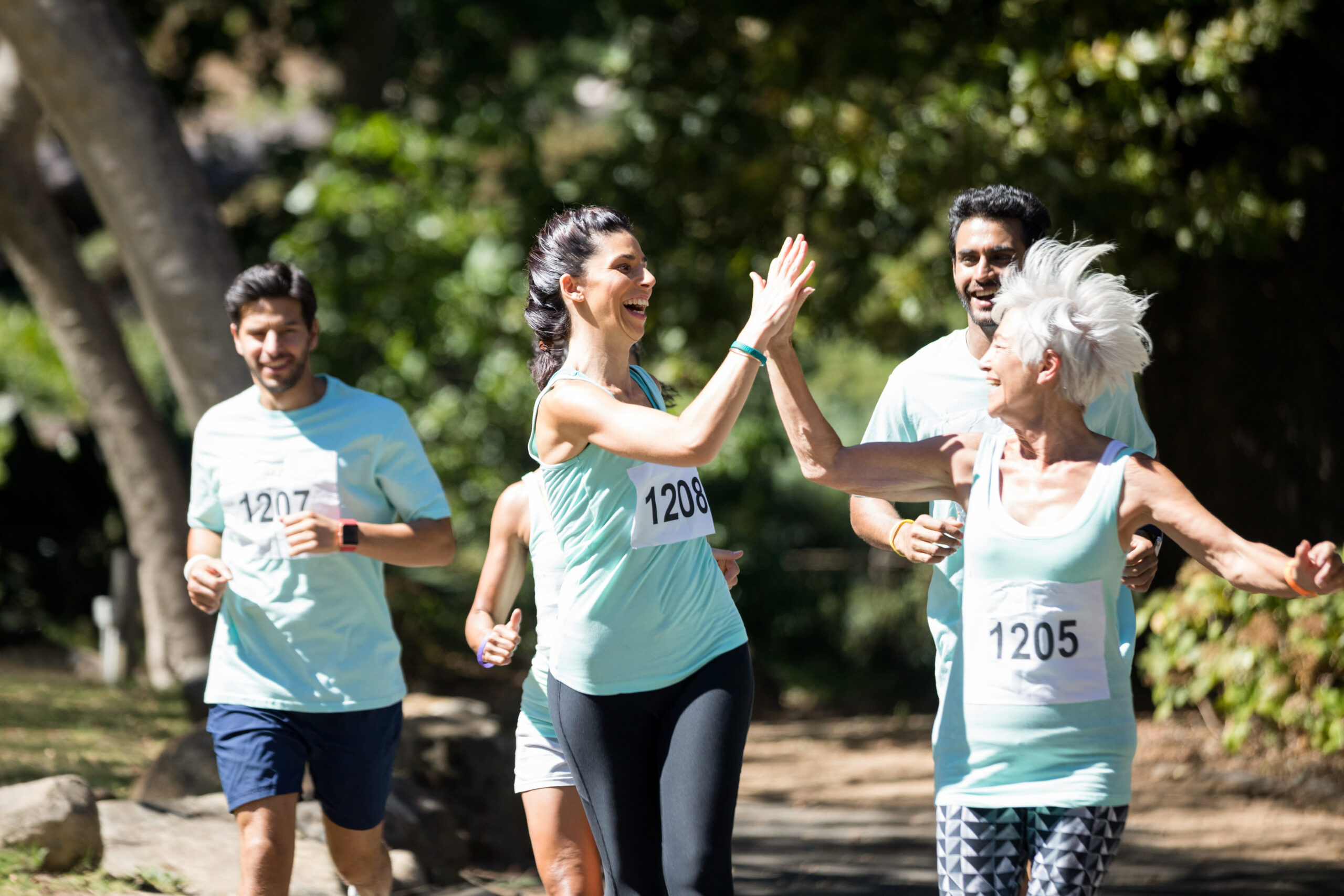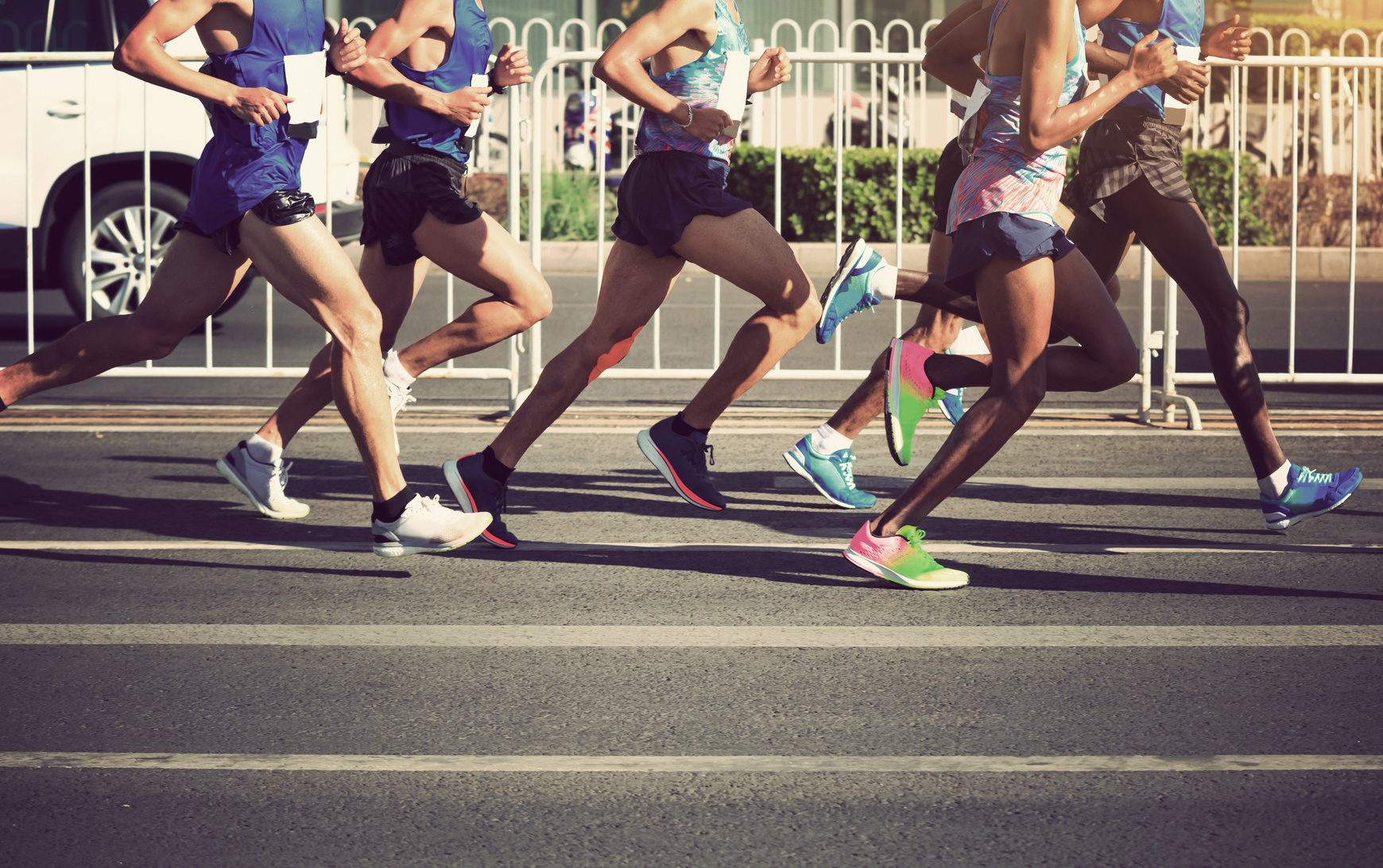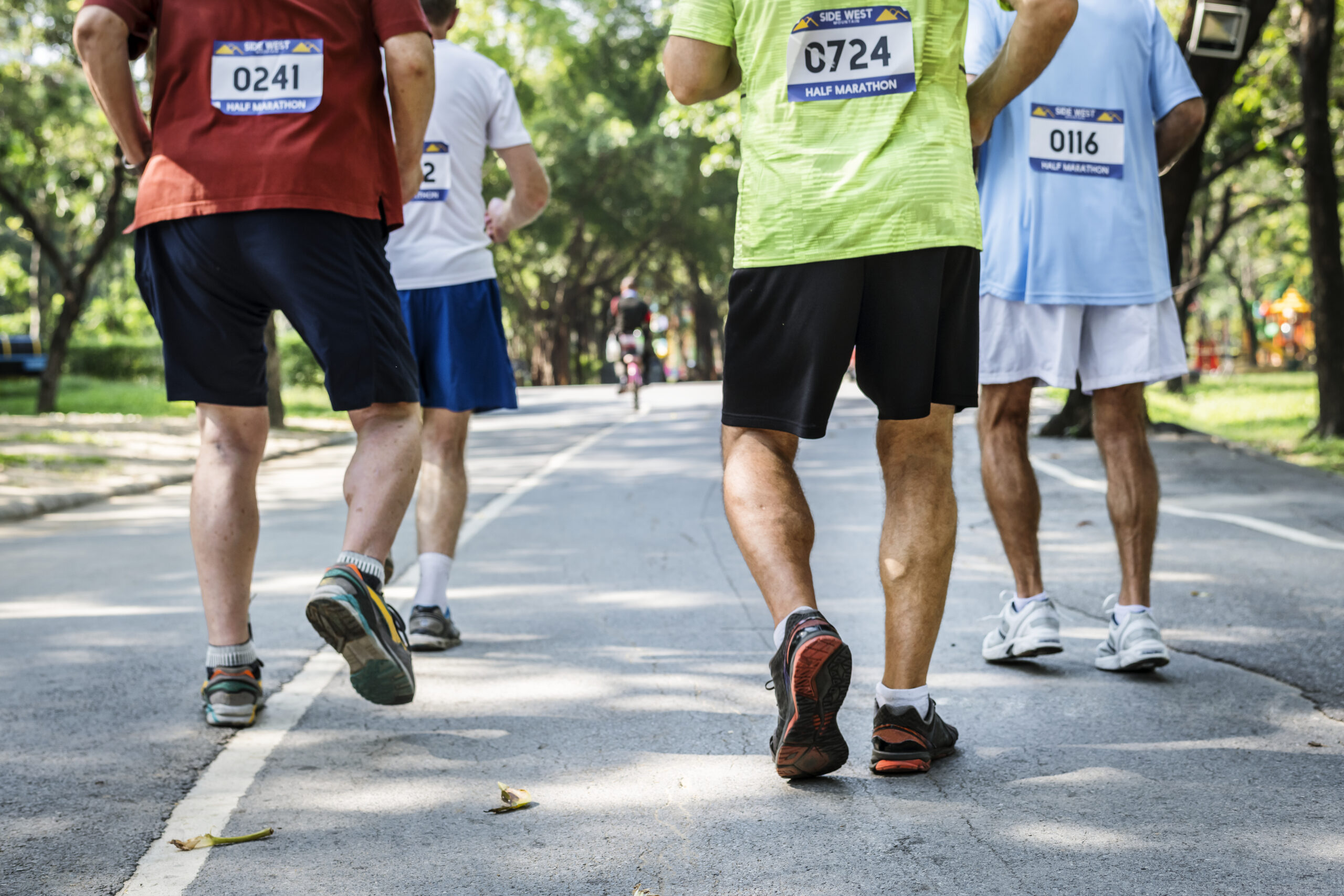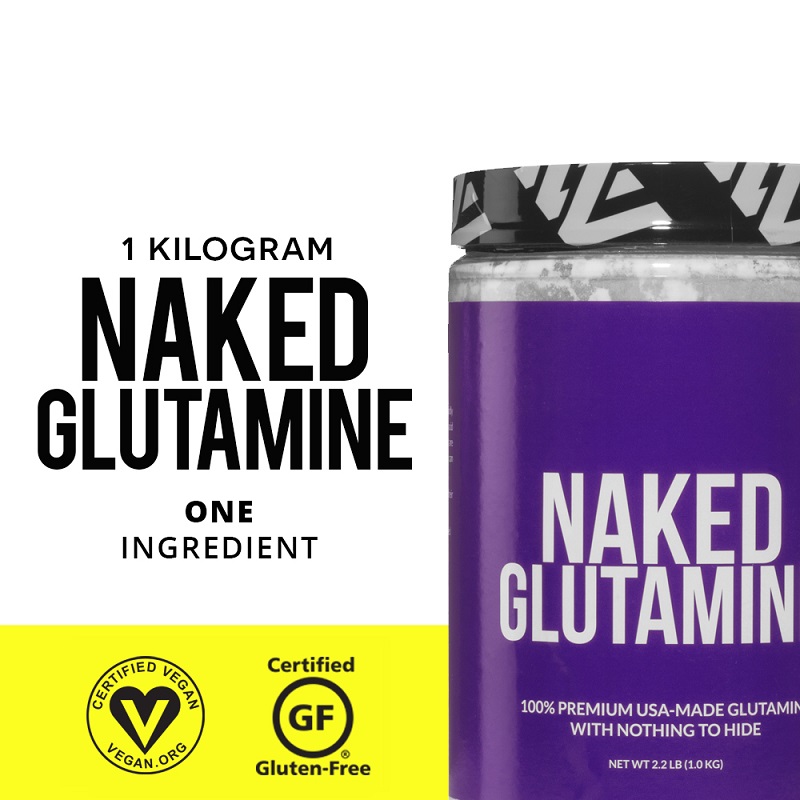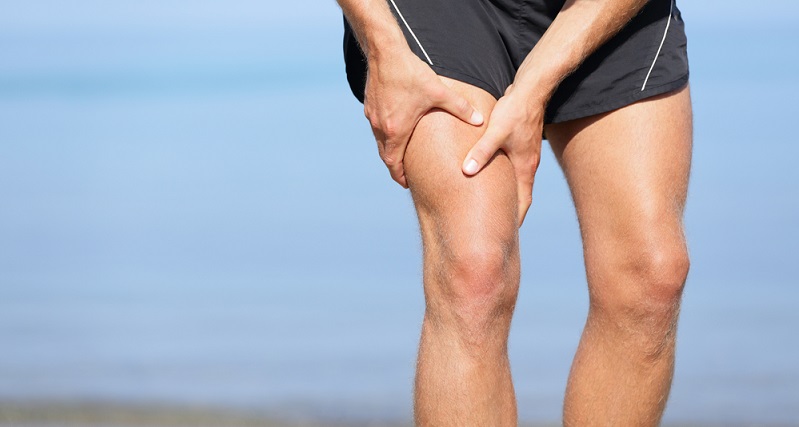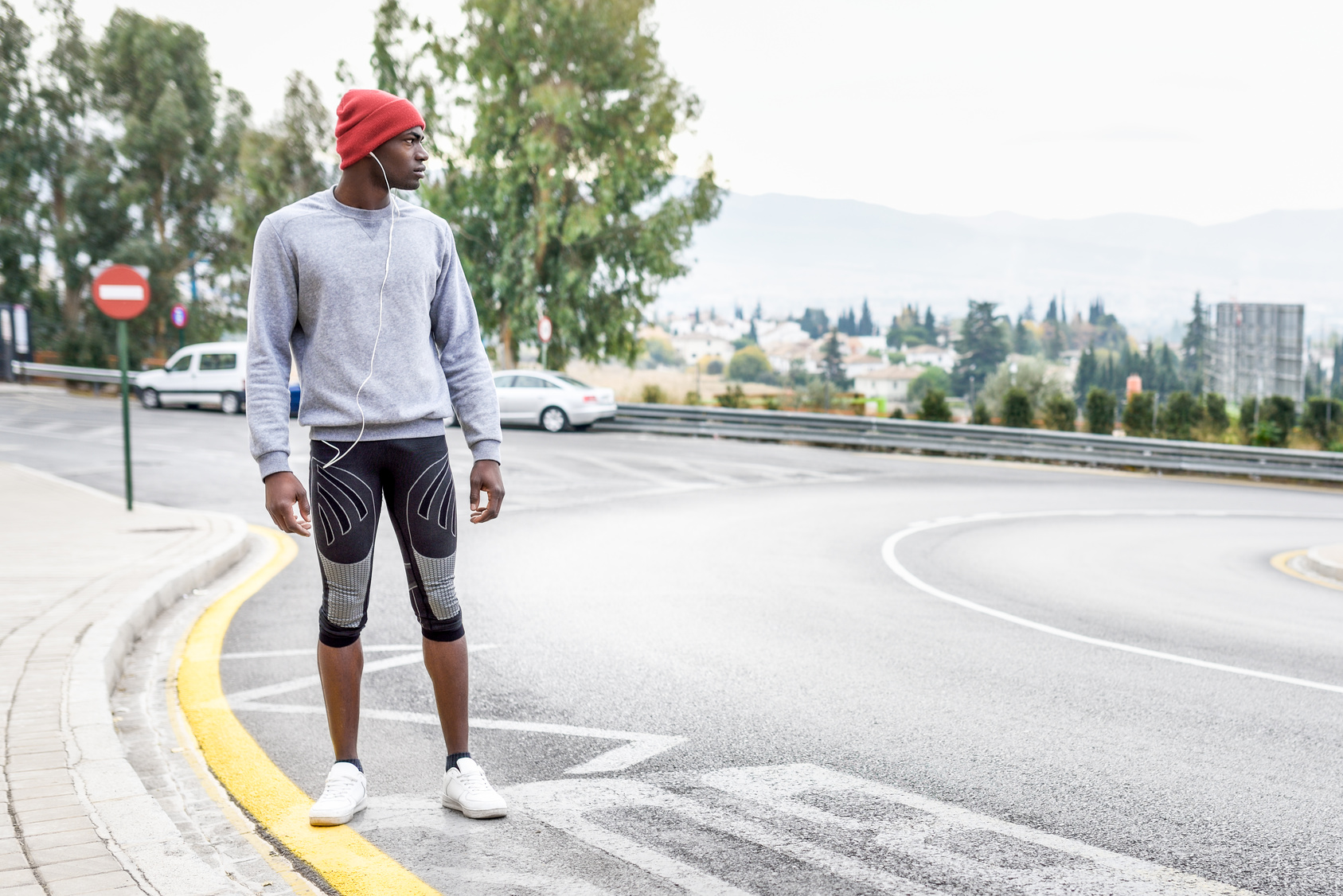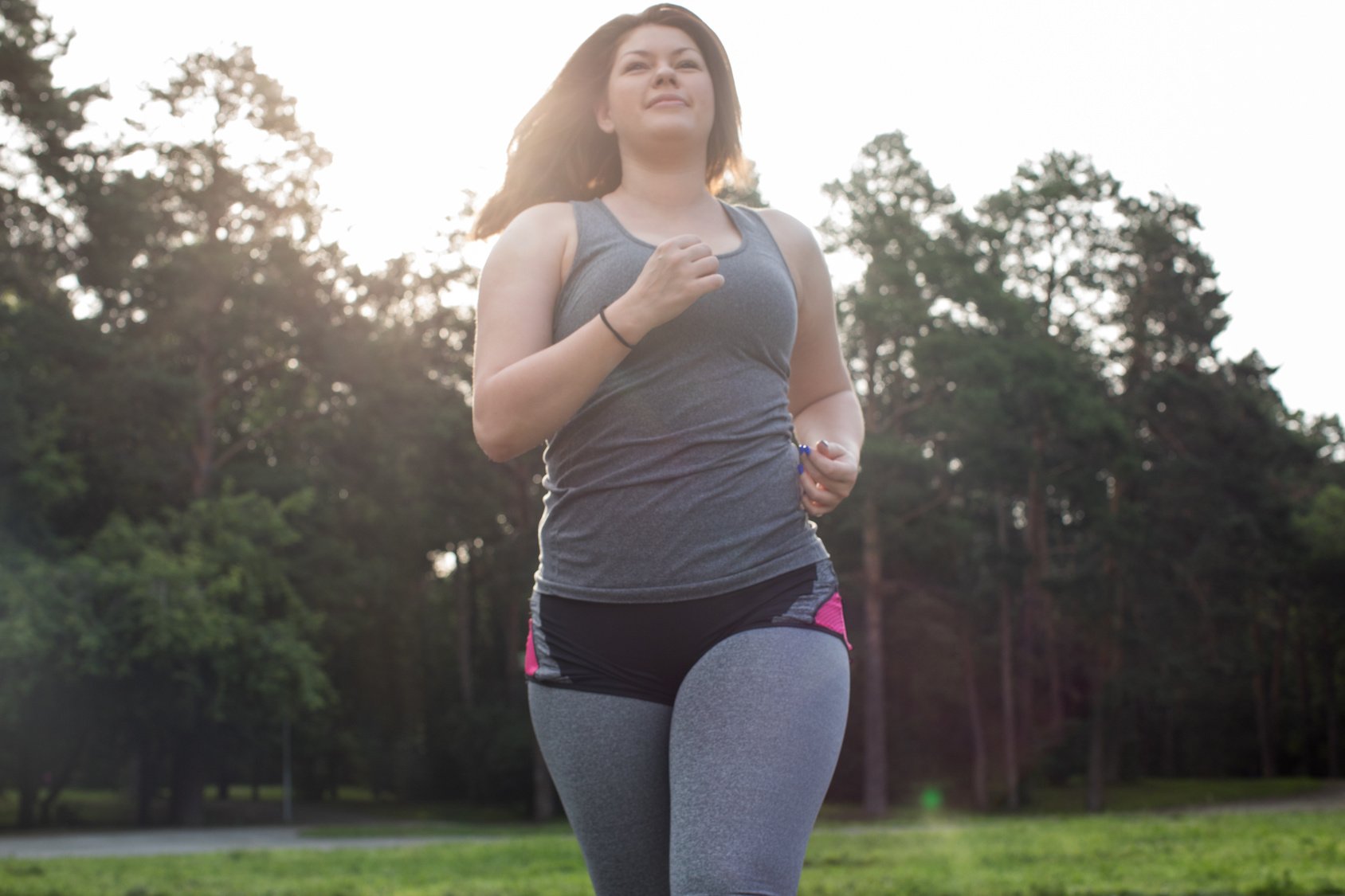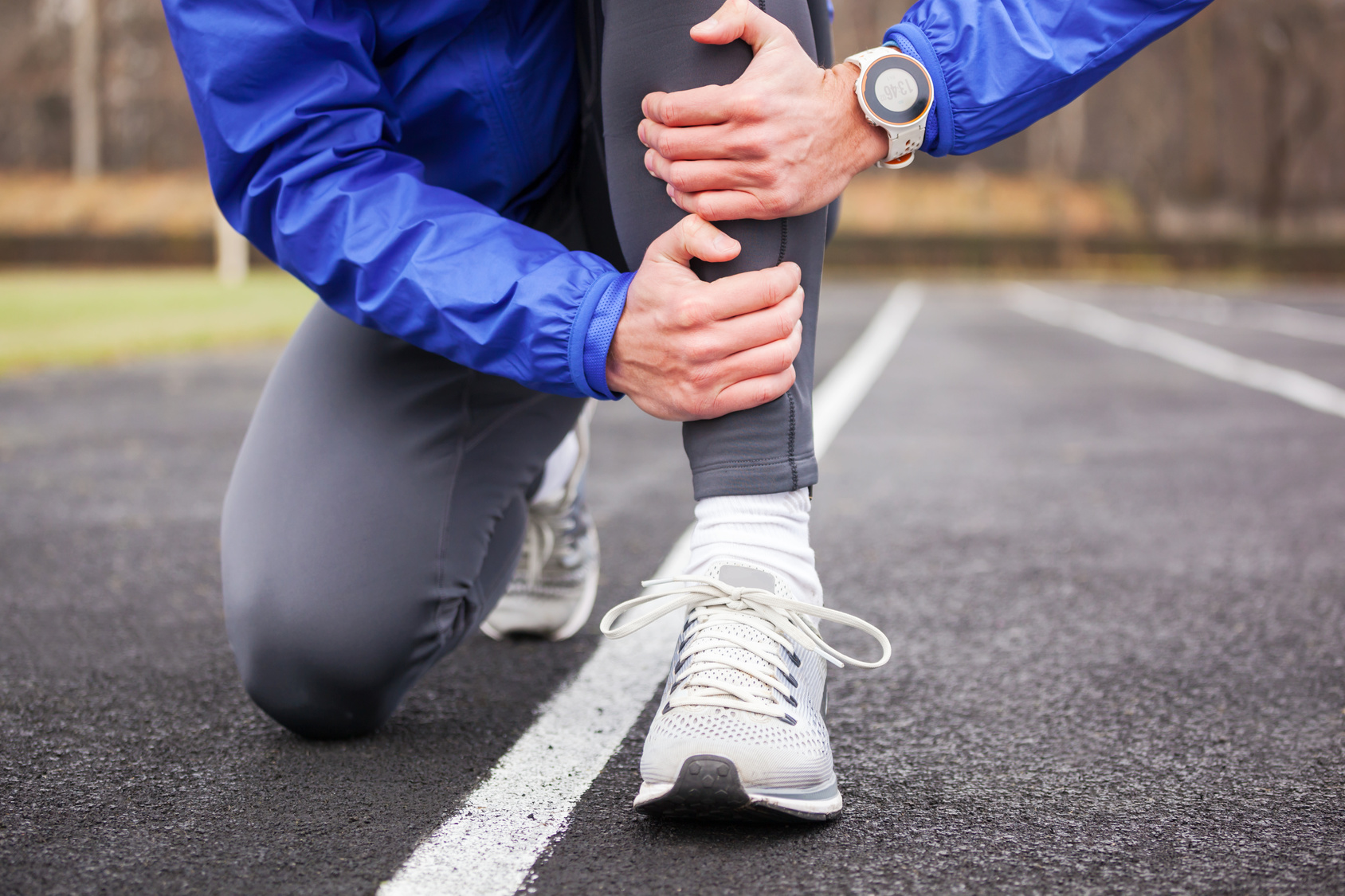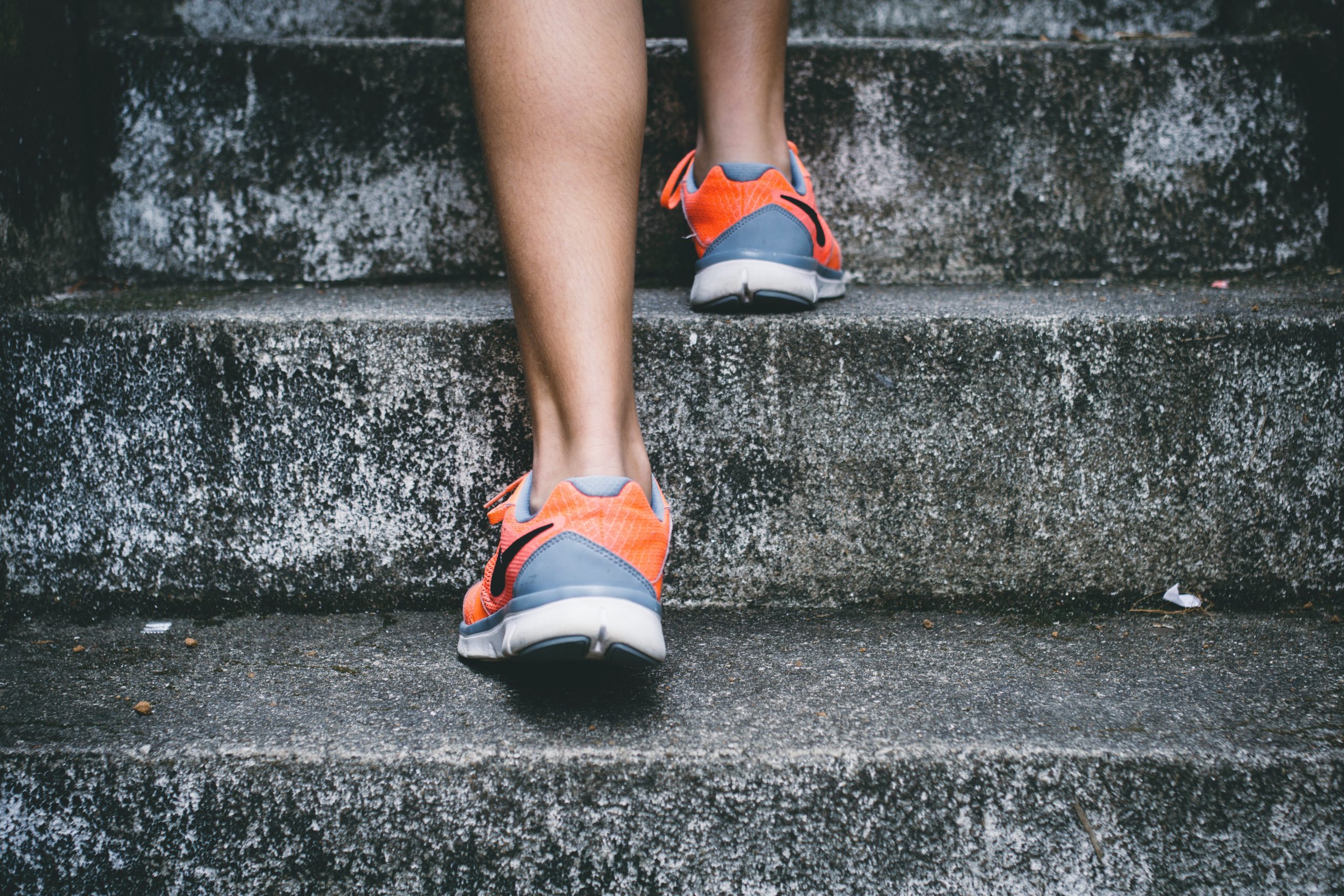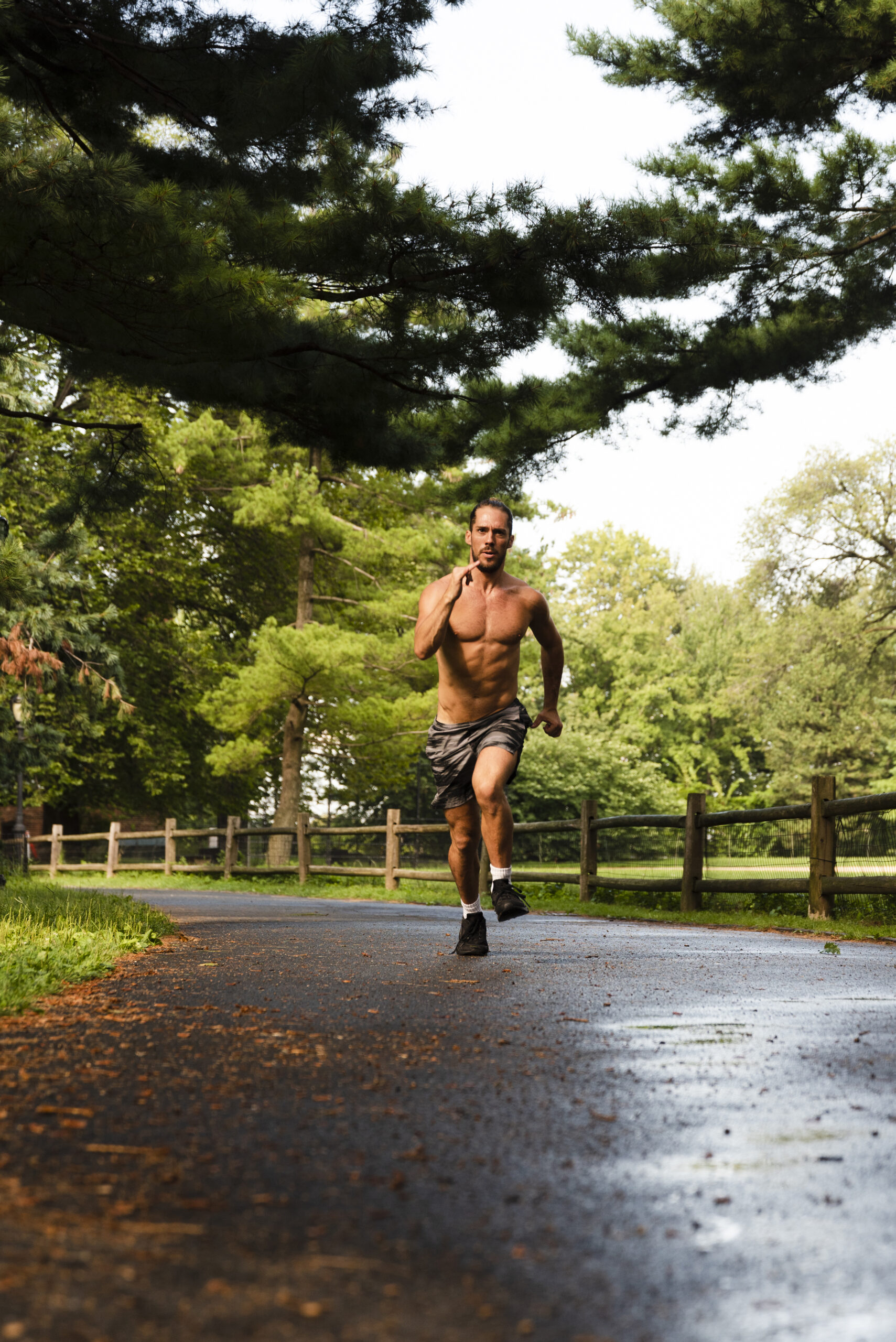Going from couch potato to marathon finisher?
That’s no joke—it’s a massive leap.
But trust me, it’s also one of the most satisfying things you’ll ever do.
I’ve helped runners in Bali’s heat and beyond make that jump, and I’ve done it myself too.
This isn’t one of those fluffy “anyone can do it if they just believe” guides.
Nope—this is the real stuff. I’ll walk you through everything I wish I knew when I started:
- How to train smart, not just hard
- What all those running terms mean (like VO₂ max and lactate threshold)
- What phases to expect (base → build → peak → taper)
- The pros and cons of different training plans (Hal Higdon, Jack Daniels, 80/20 Running)
- How to dodge injuries and burnout
- And some honest stories about people who made it—and some who didn’t.
So if you’re staring at that 26.2-mile goal wondering, “Can I actually do this?”—you’re in the right place.
Let’s lace up and start building toward your finish line.
What Is a Marathon, Anyway?
A marathon is 26.2 miles (or 42.2 kilometers).
To put that in perspective: you’d be running around a 400-meter track 105.5 times. Yeah… brutal.
If you’re running at a 12-minute mile pace, you’re looking at about 5 hours and 15 minutes out there. Some folks move faster, others slower—there’s no magic number for your first marathon.
Your only real goal?
Cross that finish line strong and proud.
How Long Does Couch to Marathon Take?
About 6 months.
Most true beginners need 24–30 weeks to train safely without wrecking their body【runnersblueprint.com】.
That’s enough time to build up mileage, endurance, and mental grit without flirting with injury.
Now, I’ve seen exceptions.
Some people train for three months and crush it.
Others have been running for years and still DNF their first race. It all depends.
If you’ve already done a few 5Ks or maybe a 10K, you might squeeze your training into 4–5 months.
But here’s my coaching advice: don’t rush it. A little extra time is better than limping off the course halfway through.
And hey, this all assumes you’re healthy and not battling any major injuries. If you’re completely new to fitness, start with a few weeks of walking or a couch-to-5K program.
You don’t need to leap straight into marathon mode.
Build a base first. That’s where the wins are made.
What should my weekly mileage be before starting a marathon plan?
Ideally, be running about 15–25 miles per week.
That means you can comfortably knock out a 5–6 mile run, even if you walk some of it.
Hal Higdon’s beginner plan kicks off with a 6-mile long run in Week 1.
If that sounds insane right now, no stress. Just spend a few extra weeks doing a 5K or 10K plan to build up.
Think of it like this: the more miles you already have in your legs, the smoother the next few months will go—and the less likely you are to get sidelined by injury.
Don’t Skimp on Gear (Especially Shoes)
If you ignore everything else in this article, hear this: don’t cheap out on your shoes. They’re your most important weapon.
Running Shoes
Go to a running store.
Get fitted.
Find something with decent cushioning and support for distance.
Don’t run your marathon—or your long runs—in brand-new shoes.
I made that rookie mistake once. Slipped into a flashy new pair and thought I was golden.
By mile five, I was bleeding through my socks. Had to hobble home with angry blisters and a bruised ego.
Trust me, break your shoes in with at least 100 miles before race day【runnersblueprint.com】. Better yet, rotate two pairs during training.
Socks
Get synthetic or wool-blend running socks. Seamless, moisture-wicking stuff.
Cotton socks are blister factories. Learned that the hard way on a humid Bali long run—looked like I ran through a meat grinder.
Clothes
Wear moisture-wicking shirts and shorts.
No cotton.
For women, a solid sports bra is non-negotiable【runnersblueprint.com】.
Here in Bali, I live in feather-light running gear because the heat’s no joke. If you’re training somewhere cold, layer up with smart technical gear you can peel off as you warm up【runnersblueprint.com】.
Hydration
Once your long runs creep past an hour, you’ll need water.
Whether it’s a handheld bottle, a waist belt, or a hydration vest—just find what works.
Don’t let dehydration sneak up and kill your run.
Other Essentials
- Running hat + UV-blocking sunglasses
- Waterproof jacket if you train in rainy weather
- Anti-chafe balm (thighs, armpits, nipples—don’t wait until it’s too late)
- GPS watch or app to track your runs
If you’re going to spend money on anything, make it shoes, socks, and anti-chafe balm.
That trio has saved me (and my runners) more times than I can count.
Marathon Training, Step by Step: What It Really Looks Like
So you’ve got the fire.
You’ve picked up your gear.
You’re ready to go.
But if you think marathon training is just “run a little more each week,” let’s hit pause right now.
Marathon prep is a process.
A grind.
A system that builds layer by layer, like stacking bricks. Without structure, it’s like building a house on sand—you’ll crash before you even get to the 10-mile mark.
Here’s how I walk my runners through the journey from couch to 26.2.
The 4 Phases of Marathon Training
I break marathon training into four blocks. Think of it like climbing a hill in stages—each part builds you up for the next.
1. Base Phase – Laying the Foundation
You start from wherever you are. Maybe you can barely run a mile without stopping.
That’s okay.
This phase gets you running regularly, gradually stretching your distance toward a solid 5K base.
You’re not chasing pace here—you’re just showing up, again and again.
2. Build Phase – Stacking the Miles
This is where things get serious.
We start adding more distance.
Long runs creep from 5K toward 10K and beyond.
You’ll also dip your toes into faster efforts—think strides or simple intervals—just enough to remind your legs they’ve got gears.
3. Peak Phase – Testing the Engine
This is the heavy lifting.
Mileage gets high. Long runs stretch to 15, 18, even 20 miles. You’re running tired.
Training on tired legs is gold—it makes race day feel lighter.
This part tests your head as much as your legs. You’ll want to quit. Don’t.
4. Taper Phase – Rest & Sharpen
The final 2–3 weeks.
You cut back on mileage so your body can heal up and absorb the work. It’s not slacking—it’s strategy.
Don’t let the taper freak you out. You’ll feel weird, maybe even sluggish. That’s your body gearing up for race day.
How Many Runs Per Week?
Aim for 3–4 runs a week【runnersblueprint.com】. You don’t need to run daily—in fact, you shouldn’t. The sweet spot for beginners is usually:
- Short run
- Midweek run
- Long run (usually on weekends)
- Optional fourth easy run
Rest is part of training. So are cutback weeks. Don’t ignore them.
Long Runs: The Backbone of Your Plan
The long run is the main event. Do one every week.
It might start at just 3 miles with walk breaks—and that’s fine. What matters is showing up and slowly building the distance.
Add about a mile each week. Every few weeks, pull back (cutback week) to avoid overload【runnersblueprint.com】.
Eventually, your longest run will top out around 18–20 miles【marathonhandbook.com】.
And no, you’re not running those at race pace.
You go slow. You should be able to chat during these.
If you’re gasping, you’re going too hard. This is about time on your feet and building mental grit.
Easy Runs: Don’t Overthink These
Most of your weekly miles will be easy pace.
And I mean easy.
You should feel like you’re holding back. Forget pace. Easy runs build your engine and help recovery.
Roughly 80% of your runs should be easy【runnersworld.com】. The 80/20 method—coined by coach Matt Fitzgerald—works.
It helps you stay consistent and keeps injuries at bay. I tell my athletes: “Easy is a feeling, not a number.” If it feels smooth, it’s working.
Walk-Run Works (Especially at the Start)
If you’re new to running, walk breaks are not cheating.
They’re smart.
One of the best ways to build endurance without injury is with a run-walk combo【runnersblueprint.com】.
Start with something like “Run 1 minute, walk 2 minutes, repeat 10 times.” Gradually flip that ratio over the weeks until you’re running more than walking.
And hey—on race day, walk breaks might still be part of your strategy. The Jeff Galloway method is based on it. I’ve seen it help runners finish strong instead of crawling to the end.
Cross-Training & Rest Are Non-Negotiable
You’ll take 1–2 full rest days a week—no workouts, no guilt【runnersblueprint.com】. Your body needs recovery just as much as it needs miles.
You’ll also cross-train 1–2 times per week. That means stuff like:
- Cycling
- Swimming
- Brisk walking
- Yoga or mobility work
- Strength training (especially core and glutes)
Cross-training builds you up without the pounding of running. It also keeps things interesting.
Personally, I love yoga and short strength circuits on off days. Keeps me limber, resets my head, and protects me from injury.
The 10% Rule: Build Smart
The golden rule in marathon prep? Don’t get greedy with mileage.
Increase your weekly distance by no more than 10% each week【runnersblueprint.com】.
So if you ran 15 miles total last week, your next week should be around 16–17, not 20.
Same goes for long runs—slow, steady gains.
Every 3–4 weeks, take a cutback week. Hold mileage steady or drop it slightly to let your body catch up. That’s where the real growth happens.
Phase 1: Base Building (Weeks 1–6)
Goal: Build a solid running habit and get your body used to moving for 3 miles without falling apart.
This first stretch isn’t about going fast or far. It’s about getting your legs to show up, even when your brain says, “Nah.”
Especially if you’re starting from the couch, expect to lean on the run/walk method for a bit—and that’s more than okay.
Here’s a sample of how I’d ease someone in during the first six weeks:
- Week 1: Start with 1-minute jog, 2-minute walk. Repeat that 10 times. Boom—30 minutes done. Do that 3x/week. Long run? 1–2 miles, even if it’s mostly walking.
- Week 2: Run/walk 3–4 times. Try to get that long run closer to 3 miles—running more if you’re up for it. Weekly mileage? Around 5–8 miles total.
- Week 3: Run a little longer. Something like 2 min run / 1 min walk. Long run hits 4 miles.
- Week 4 (Cutback): Step back a bit. Let your legs soak up what you’ve done. Maybe stick to a 3-mile long run.
- Week 5: Aim for a few continuous runs—even if they’re short. Long run pushes to 5 miles.
- Week 6: Less walking, more running. Try for a 6-mile long run, if it feels right.
If you can cover a 5K (3.1 miles) comfortably by the end of this phase—even if you still walk a little—you’re winning. Weekly mileage might land between 10 and 15 miles.
But don’t obsess over numbers.
This isn’t about stats yet—it’s about routine, momentum, and not quitting when your legs are screaming.
What’s Happening Behind the Scenes (Physiology Check):
This is where your aerobic system gets its first serious workout. You’re teaching your body to use oxygen better—to build a bigger engine.
Even if you’re not doing intervals, every run is nudging your VO₂ max higher (that’s just your body’s max oxygen delivery system, by the way).
According to Runner’s World, even easy runs help expand capillaries, boost mitochondria (your cells’ engines), and start laying down endurance foundations.
You’re also slowly lifting your lactate threshold—the pace at which your legs start burning and your body yells, “Nope.”
That means you’ll feel less wiped at the same pace over time (Marathon Handbook backs this up). It’s happening without you even thinking about it.
My Real Talk:
I still remember my first 5K. Bali humidity, burning lungs, and the strong urge to quit after 10 minutes.
But I stuck with it—and the next week, 2 miles didn’t feel like death.
I saw a Reddit post from a guy who nailed it: “The 5K felt like a huge win. Now I’m logging 15–20 miles a week. Wild how consistent effort stacks up.” Couldn’t agree more.
Phase 2: Build Endurance (Weeks 7–12)
Goal: Go from 5K to 10K and beyond.
Start building mileage into the 15–25 weekly range, with a little sprinkle of speed.
By now, you’ve probably got a groove going. You’re not gasping after the first 10 minutes, and that 3-mile run doesn’t feel like Everest.
Now we’re going to push the envelope—gently.
The key word here is “progression.”
- Week 7: Long run hits 6 miles (~10K). Toss in 2–3 shorter runs. Maybe try an easy fartlek—speed up for 30 seconds here and there to wake up those fast-twitch muscles.
- Week 8: Long run goes to 7 miles. Weekly total might be 18–20 miles.
- Week 9: Long run 8 miles. Add a simple tempo run: 3 miles total, with the middle mile at “comfortably hard” pace (think 10K race effort). These teach your body to handle fatigue without falling apart.
- Week 10 (Cutback): Step back again. Long run drops to 6 miles. Let your body recover and bounce forward.
- Week 11: Long run 9 miles. Weekly mileage passes 20.
- Week 12: Long run hits 10 miles—double digits, baby! Try running 1–2 of those at goal marathon pace just to feel it.
At this stage, you’re probably running 10Ks and even 15Ks in training. That’s huge. It’s common to see your 5K pace drop noticeably too—more fitness, better efficiency, and confidence.
What’s Happening Under the Hood:
We’re getting more strategic here—adding tempo runs and speed play to start pushing that anaerobic threshold. That’s the point where your muscles flood with lactic acid.
According to Marathon Handbook, tempo runs help your body handle and clear lactate, so you can run faster for longer without blowing up.
Runner’s World also notes this is when you improve your running economy—how much oxygen your body uses to hold a certain pace.
More miles = better efficiency. You’ll burn less energy for the same result. That’s a quiet win that shows up later in your long races.
Life Check:
This is where many runners hit the “mid-plan blues.” Motivation dips. Skipping a run suddenly feels very reasonable. I’ve been there. Everyone hits that wall.
That’s why I recommend looping someone in.
Grab a friend, join a local run club, or even post your goals on social media or a subreddit like r/running.
One survey from FourFive.com found 87% of runners stuck to their routine better when they trained with a friend. Accountability makes a huge difference when the couch is calling.
As one sports psychologist put it: “Running with others boosts motivation, consistency, and fun.” That matters more than you think.
Phase 3: Peak Training – Welcome to the Grind (Weeks 13–20)
Goal: Stack your biggest mileage weeks, cap off with an 18–20 miler, sharpen your race pace legs, and finish feeling tired—but strong.
Not broken. Not overcooked. Just that deep fatigue that tells you: You’re getting ready.
This is the part where it gets real.
If Base Phase was the warm-up and Build was the hard work, then Peak Phase is the final exam before the marathon.
This is where you teach your body—and your brain—to go the distance. You’ve already built decent endurance.
Now you’re training for fatigue. For grit. For holding your pace when everything in your body is yelling slow down.
Here’s how these weeks usually play out for most first-timers:
Weeks 13–14: Climbing Higher
Your long runs go from 10 to 12, then 14 miles. Weekly mileage creeps into the low-30s.
Start mixing in Marathon Pace (MP) segments at the end of your long runs.
Example: On a 10-miler, run the last 2 miles at your goal marathon pace.
Trust me, it’s a humbling experience—but a necessary one. This simulates that “late-race fatigue” feeling. You’re not just building your legs here—you’re teaching your brain how to stay locked in when things get heavy.
Quick Check-In: Have you tried adding MP miles to your long runs? How did it feel?
Week 15: Cut Back and Catch Your Breath
Dial it down a bit—long run drops to 10 miles.
You’ve earned a down week. Let the body soak in the work you’ve done so far.
Some runners use this week to run a casual half marathon or do a solo time trial.
Not mandatory, but it’s a great way to test your race-day routine: fueling, pacing, shoes, even your playlist. Nothing fancy—just go out, run steady, and see what happens.
Weeks 16–17: Long and Lonely
You’re now logging 16- and 18-mile long runs. This is where a lot of runners hit a wall mentally.
Plan ahead—safe route, maybe a loop course so you can stash water and gels.
Bring a buddy for those last miles if you can. These runs will likely take over 3 hours, so slow it down and focus on fueling.
I usually treat these like mini simulations: carry sports drink, take a gel every 45 minutes, and see what your stomach agrees with. Don’t try anything new on race day—learn now.
Runner Confession: I once tried a new gel brand during an 18-miler and had to dive into a gas station toilet by mile 14. Never again.
Week 18: The Big One
This is it—your 20-miler.
Not everyone hits 20, and that’s okay.
Some stop at 18. But mentally, 20 is a milestone.
Don’t feel like you have to run 26.2 in training—that’s a fast-track to injury.
Running 20 miles tired is more than enough prep for race day, especially since you’ll be tapering with fresh legs by then.
Most runners also hit their peak weekly mileage here—somewhere between 35–40 miles. That’s solid for your first time.
Week 19–20: The Taper Begins
Week 19: Pull back by about 20–25%. Long run drops to around 12–13 miles. Your body starts recovering.
Week 20: Drop it even more—half your peak mileage. Long run is only 8 miles, and it should feel easy.
Your legs start to feel lighter. You might even get a little antsy—that’s the taper magic.
Midweek Workouts? Optional, Not Required
If you’ve got the energy, you can throw in one faster session midweek—like mile repeats at 10K pace or a tempo run (4–6 miles at moderately hard effort).
But for most first-time marathoners, this isn’t essential.
Focus on the long runs. Easy mileage is your bread and butter. Endurance is what gets you to the finish line, not flashy intervals.
Fueling the Machine: Don’t Wait Until Race Day to Figure This Out
Once your long runs are over 90 minutes, fueling isn’t optional.
You need to start experimenting.
Most runners aim for 30–60 grams of carbs per hour during long efforts—via gels, chews, sports drinks, or real food (I’ve seen people eat rice balls and PB&Js mid-run).
Example: I usually take a gel every 45 minutes and chase it with water. I also carry an electrolyte drink with carbs and sodium, especially on humid days here in Bali. Figure out what works now, not when the stakes are high.
Pre-run meal? Keep it simple—some toast and peanut butter, or oatmeal 1–2 hours before.
Post-run? Don’t skip it. Within 30 minutes, get some protein and carbs in—like a protein shake or chocolate milk. Your body will thank you later.
The Science: Why Running on Tired Legs Works
This phase isn’t just about mileage—it’s about fatigue resistance.
There’s this concept called accumulated fatigue.
Basically, you’re running on legs that haven’t fully recovered from earlier in the week. It’s deliberate. It’s how you teach yourself to keep moving when your body’s begging to stop.
You might notice your heart rate’s higher on easy days. Or your pace is slower even though the effort feels the same. That’s part of the process.
According to studies published in the Journal of Strength & Conditioning Research, these long, slow efforts help your muscles become more efficient at using fat for fuel (huge for marathons), and they increase your glycogen storage.
You also see modest gains in lactate threshold and VO₂ max, but at this point, the real benefit is mental.
This is where you train your brain to deal with discomfort, boredom, doubt—all the stuff that shows up in the final 10K of a marathon.
This is where you earn the right to call yourself a marathoner-in-training.
Tired vs. Overtrained – Know the Line Before You Cross It
Let’s get one thing straight—peak training will wear you out. You’ll wake up stiff, question your life choices on mile 17, and wonder if your legs will ever feel fresh again.
But there’s a difference between good fatigue (the kind that builds fitness) and full-on overtraining, which is basically your body waving a white flag.
Here’s what overtraining feels like:
- You’re always exhausted—even after sleep.
- Your heart rate’s jacked up for no reason.
- Your mood’s all over the place—snappy, down, flat.
- You stop caring about food (huge red flag).
- And sleep? Forget it. You’re wired and tired.
If that sounds familiar, don’t ignore it. I’ve seen runners push through this wall and end up injured or burnt out for months.
Me? I take at least one full rest day a week, no debate.
And if I’m dragging hard during peak weeks, I’ll take two. I also bump up my sleep—try to hit 8–9 hours when mileage is high. Trust me, it makes a massive difference.
One of the best things I’ve ever heard from a coach was this:
“It’s better to show up 10% undertrained than 1% overtrained.”
Read that again.
Because an overtrained runner won’t finish strong. They might not finish at all.
Burnout Isn’t Weakness, It’s a Signal
Quick story: I coached a runner who was 3 weeks out from her marathon. She was grinding every day, but I could tell something was off. She finally said,
“Coach, I’m done. My legs hurt all the time. I don’t even want to run anymore.”
Classic training burnout.
We made a simple switch—swapped a run for a bike ride, added an extra rest day, and doubled down on sleep and fueling.
Within a week, she was smiling again. The bounce came back. She ran her marathon strong.
Moral of the story: Listen before your body screams. Fatigue is part of the game, but full-on dread? That’s a red flag.
If you’re feeling cooked, take a day off or cross-train. You won’t lose fitness. You might just save your race.
Phase 4: Taper Time (Weeks 21–24)
Goal: Shed the fatigue. Keep the fitness. Roll into race day fresh and ready to crush.
First off—congrats.
You survived the hardest part.
You did the long runs.
You earned this taper.
Now comes the weird part: slowing down. And yeah, it feels strange. Most runners hit this phase and panic like, “Wait, am I losing fitness?! I’m barely running!”
Breathe. That’s exactly what your body needs.
Here’s how taper usually plays out:
3 Weeks Out
- Cut weekly mileage to about 70% of your peak.
- Long run = ~12–13 miles.
- No more beast-mode speedwork—just short strides if anything. Save the fire for race day.
2 Weeks Out
- Drop to ~50% of peak.
- Long run = ~8–10 miles.
- You should start feeling fresher, less sore, more bouncy. That’s the point. Don’t chase last-minute gains.
Race Week
- 2–3 short, easy jogs (2–4 miles).
- Maybe a couple miles at marathon pace—but nothing that leaves you drained.
- 2 days out: I like a 2-mile shakeout.
- Day before: Some runners jog a mile. Others rest completely. Go with what helps you chill.
Take Care of the Small Stuff
Use this time to sharpen everything else:
- Sleep more.
- Eat well.
- Carb up smart (especially in the last 3 days).
- Avoid dumb injuries—now isn’t the time to jump into a basketball game or rearrange your garage.
- Got some aches? Try gentle stretching, foam rolling, or a sports massage. Let your body absorb the work.
Taper Madness Is Real
You might start overthinking, doubting your plan, or feeling antsy.
That’s normal.
Use that energy to mentally rehearse race day:
- Picture hitting mile 20 and still having gas in the tank.
- Go over your fueling plan.
- Lay out your race gear.
- Print your pace chart.
If you feel a little bored during taper… good. That means it’s working.
Marathon Week: Lock It In
Let’s walk through your final checklist:
✅ Gear Rehearsal
Do a short run in your exact race-day kit.
Socks, shoes, shorts, everything. No surprises.
✅ Nutrition Strategy
Plan your dinner (carbs, not spicy), your breakfast (something you know works), and your race fuel.
I usually go: gel at miles 8, 14, and 20. You do you—but test it first.
✅ Pacing Plan
If it’s your first marathon, just finishing is a win.
If you’ve got a goal, use a pace band or calculator—but also have a Plan B.
Hot day? Bad sleep?
Adjust. It’s smarter to run slightly slower and finish strong than blow up chasing a dream pace.
✅ Logistics
Sort your ride, alarm clock, gear layout, etc.
Race morning is way less stressful when you’ve got everything dialed in.
Race Day: Time to Cash In
You’ve trained for this.
You’ve sacrificed for this.
Now all that’s left is to show up and run your race.
The first 10 miles? You’ll feel invincible.
The halfway point? Still solid.
Then around mile 18 or 20—that wall hits.
Here’s where you dig deep.
Think back to all those long runs on tired legs.
Think about your “why.”
Use whatever you’ve got—crowd energy, your playlist, a friend’s voice in your head.
Take walk breaks if needed. They don’t make you weak. A 1-minute walk can save your race.
Final Mile Magic
When you see that finish line—lean into it.
Smile, cry, scream—whatever you feel, let it out.
Because you just joined the 1% who can say they’ve run a marathon.
Every sore muscle, early alarm, and soaked shirt was worth it.
Welcome to the club, marathoner.
The Real Finish Line
By the time you hit that start line, you won’t be the same person who signed up months ago.
You’ll have already fought through doubt, soreness, missed workouts, maybe even a few breakdowns. And you kept showing up. That’s the real win.
The race?
That’s just your victory lap — yeah, a long one at 26.2 miles — but by then, you’ll have earned it.
I’ve coached a lot of people through this journey, and one thing always holds true: when you cross that line, something clicks.
You realize it wasn’t just about the miles.
It was about proving to yourself that you could do something hard. Something most people won’t even try.
And maybe it’s not just about you. Maybe your grit fires up a friend, your kids, or someone scrolling past your post thinking, Damn. If they can do it, maybe I can too.
I’ll leave you with a quote I saw once on Reddit that stuck with me:
“No matter what your finish time is, you cleared 26.2 miles — and that is worth celebrating.”
Run it. Walk it. Crawl it.
Doesn’t matter. Once you cross that line, you’re a marathoner. Forever.
So go write your marathon story.
One mile at a time.
One foot in front of the other.
I’ll be rooting for you — loud and proud.


